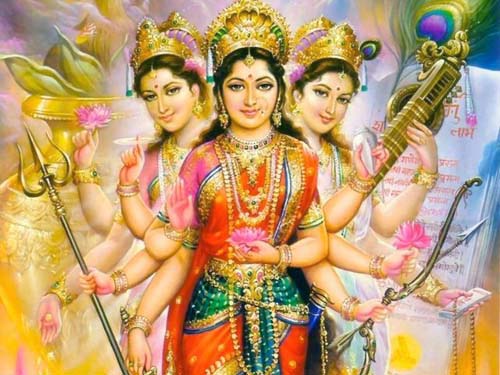Fighting Over Images of Gods

- By EDWARD J. BLUM and PAUL HARVEY - The New York Times - September 26, 2012
THE murders of four Americans over an amateurish online video about Muhammad, like the attempted murder of a Danish cartoonist who in 2005 had depicted the prophet with a bomb in his turban, have left many Americans confused, angry and fearful about the rage that some Muslims feel about visual representations of their sacred figures.
The confusion stems, in part, from the ubiquity of sacred images in American culture. God, Jesus, Moses, Buddha and other holy figures are displayed in movies, cartoons and churches and on living room walls. We place them on T-shirts and bumper stickers — and even tattoo them on our skin.
But Americans have had their own history of conflict, some of it deadly, over displays of the sacred. The path toward civil debate over such representation is neither short nor easy.
The United States was settled, in part, by radical Protestant iconoclasts from Britain who considered the creation and use of sacred imagery to be a violation of the Second Commandment against graven images. The anti-Catholic colonists at Plymouth and Massachusetts Bay refused to put images of Jesus in their churches and meetinghouses. They scratched out crosses in books. In the early 1740s, English officials even marched on an Indian community in western Connecticut, where they cross-examined Moravian missionaries who reportedly had a book with “the picture of our Saviour in it.”
The colonists feared Catholic infiltration from British-controlled Canada. Shortly after the Boston Tea Party, a Connecticut pastor warned that if the British succeeded, the colonists would have their Bibles taken from them and be compelled to “pray to the Virgin Mary, worship images, believe the doctrine of Purgatory, and the Pope’s infallibility.”
It was not only Protestants who opposed sacred imagery. In the Southwest, Pueblo Indians who waged war against Spanish colonizers not only burned and dismembered some crucifixes, but even defecated on them.
In the early Republic, many Americans avoided depicting Jesus or God in any form. The painter Washington Alliston spoke for many artists of the 1810s when he said, “I think his character too holy and sacred to be attempted by the pencil.” A visiting Russian diplomat, Pavel Svinin, was amazed at the prevalence of a different image: George Washington’s. “Every American considers it his sacred duty to have a likeness of Washington in his home,” he wrote, “just as we have images of God’s saints.”
Only in the late 19th century did images of God and Jesus become commonplace in churches, Sunday school books, Bibles and homes. There were many forces at work: steam printing presses; new canals and railroads; and, not least, the immigration of hundreds of thousands of Catholics who brought with them an array of crucifixes, Madonnas and busts of saints. Protestants began producing their own images — often, to appeal to children — and gradually became more comfortable with holy images. In the 20th century, the United States began exporting such images, most notably Warner Sallman’s 1941 “Head of Christ,” which is one of the most reproduced images in world history.
But there was also resistance. When Hollywood first started portraying Jesus in films, one fundamentalist Christian fumed, “The picturing of the life and sufferings of our Savior by these institutions falls nothing short of blasphemy.” Vernon E. Jordan Jr., an African-American who was later president of the National Urban League and an adviser to President Bill Clinton, recalled that white audience members gasped when he played Jesus as an undergraduate at DePauw University in Indiana in the 1950s.
In fact, race has been a constant source of conflict over American depictions of Jesus. In Philadelphia in the 1930s, the black street preacher F. S. Cherry stormed into African-American churches and pointed at paintings or prints of white Christs, shouting, as one observer recounted, “Who in the hell is this? Nobody knows! They say it is Jesus. That’s a damned lie!”
During the civil rights era, black-power advocates and liberation theologians excoriated white images of the sacred. A 1967 “Declaration of Black Churchmen” demanded “the removal of all images which suggest that God is white.” As racial violence enveloped Detroit that year, African-American residents painted the white faces of Catholic icons black.
More recently, there have been uproars over the Nigerian-British painter Chris Ofili’s “Holy Virgin Mary” and the New York artist and photographer Andres Serrano’s “Piss Christ.” Mr. Serrano’s image of Jesus on the crucifix, submerged in the artist’s own urine, roused a crusade against the National Endowment for the Arts in the late 1980s. Mr. Ofili’s painting of a dark-skinned Madonna with photographs of vaginas surrounding her enraged Mayor Rudolph W. Giuliani. The mayor, who mistakenly claimed that elephant dung was smeared on the image when it in fact was used at the base to hold the painting up, tried to ban it from being displayed at the Brooklyn Museum of Art, in 1999. (One upset Christian smeared white paint over it.)
Images of the sacred haven’t caused mass violence in the United States, but they have generated intense conflict. Our ability to sustain a culture supersaturated with visual displays of the divine, largely without violence, came only after massive technological change, centuries of immigration and social movements that forced Americans to reckon with differences of race, ethnicity and religion.
Edward J. Blum, an associate professor of history at San Diego State University, and Paul Harvey, a professor of history at the University of Colorado, Colorado Springs, are the authors of "The Color of Christ: The Son of God and the Saga of Race in America."


